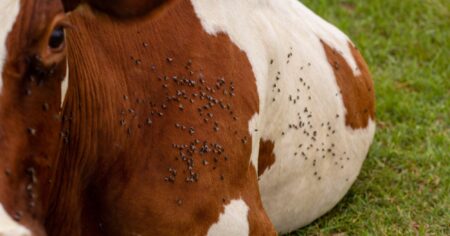USDA published the latest Crop Progress report on Monday, September 8. Here’s a closer look at recent weather and the status of North Carolina’s most important crops as September started out.
Weather
North Carolina has dried out since early June. In June, the Iowa Environmental Mesonet reported precipitation several inches above average during the month of May.
Iowa Environmental Mesonet
More of the eastern side of the state is now abnormally dry, according to the U.S. Drought Monitor.
U.S. Drought Monitor
David Jordan, North Carolina State Extension peanut specialist, reported the peanut crop in the Virginia-Carolina region has experienced limited rainfall over the past three weeks. Scattered and limited rainfall was experienced from September 6-8 in some areas of the region. However, numerous fields did not receive rain.
In Monday’s Crop Progress report, USDA said farmers had 6.7 days suitable for fieldwork the week that ended Sept. 7, compared to 6.5 days this time last year.
USDA rated North Carolina topsoil moisture 13% very short, 22% short, 62% adequate, and 3% surplus. Subsoil moisture conditions in the state were rated 4% very short, 40% short, 54% adequate, and 2% surplus.
Corn
Acreage Estimates
According to the June 30 Acreage report, North Carolina farmers planted 910,000 acres of corn in 2025. This is up from 890,000 acres from the previous year, said USDA.
Corn Dough
The latest Crop Progress report said 100% of North Carolina’s corn crop has reached the dough stage, which is equal to the five-year average. The state had also completely reached the dough stage this time last year.
Corn Dent
USDA reported 95% of North Carolina’s corn crop has reached the dent stage, and also reached 95% at this point last year. The five-year average is 95%.
Corn Mature
The latest Crop Progress reported 83% of North Carolina’s corn crop has reached maturity. The five-year average is 84%. Last year at this time 82% of the state’s crop had reached maturity.
Corn Harvested
USDA reported 44% of North Carolina’s corn crop has been harvested. The state had 31% harvested at this point last year. The five-year average is 37% harvested.
North Carolina is second only to Texas in corn harvest progress.
Corn Condition
USDA rated North Carolina corn 1% very poor, 4% poor, 15% fair, 49% good, and 31% excellent for the week that ended Sept. 7.
That is better than the national average rating of 3% very poor, 6% poor, 23% fair, 49% good, and 19% excellent.
Soybeans
Acreage Estimates
The Acreage report published June 30 said North Carolina planted 1.7 million acres of soybeans this year. That is up from 1.63 million acres from 2024.
Soybeans Setting Pods
Although 97% of the nation’s soybeans have reached the pod growth stage, North Carolina’s crop is slightly behind at 94%. The five-year average for the state is 96%.
Soybean Dropping Leaves
USDA reported 17% of North Carolina’s soybean crop dropping leaves. The five-year average is 18%. Last year at this time 18% of North Carolina soybeans were dropping leaves.
Soybean Condition
USDA rated North Carolina soybeans 3% very poor, 5% poor, 42% fair, 42% good, and 8% excellent for the week that ended Sept. 7.
The national average ratings are 3% very poor, 7% poor, 26% fair, 50% good, and 14% excellent over the same time period.
Cotton
Acreage Estimates
USDA’s acreage report said North Carolina farmers planted 290,000 acres of cotton in 2025. That is down from 410,000 acres from last year.
Cotton Setting Bolls
USDA noted 95% of cotton has set bolls in North Carolina. This is slightly behind the five-year average of 97%. Last year at this time 99% of North Carolina’s cotton had set bolls.
Cotton Bolls Opening
The latest Crop Progress reported 24% of North Carolina’s cotton has opened bolls. The five-year average is 29%. Last year at this time 33% had opened bolls.
Cotton Condition
USDA rated North Carolina cotton 7% very poor, 14% poor, 26% fair, 42% good, and 11% excellent for the week that ended Sept. 7.
The 15-state average ratings are 2% very poor, 9% poor, 35% fair, 46% good, and 8% excellent.
Cotton Harvest
Although cotton harvest has typically begun by this time in Arizona, Louisiana, and Texas, no harvest progress has been made in North Carolina yet.
Peanuts
Peanut harvest
Farmers have begun peanut harvest in Florida and South Carolina. However, no harvest progress was reported in North Carolina for the week ended Sept. 7.
Peanut condition
USDA rated North Carolina peanuts 3% very poor, 10% poor, 22% fair, 53% good, and 12% excellent for the week that ended Sept. 7.
The 8-state average ratings are 1% very poor, 6% poor, 28% fair, 54% good, and 11% excellent.
Jordan reported, “Most farmers across the region are applying their final or next-to-final fungicide spray for the season during the week of September 8. In many areas, the leaf spot advisory system in North Carolina indicates limited activity for the pathogens that cause early and late leaf spot disease.”
Pasture and Range
USDA rated pasture and range conditions in the state 1% very poor, 2% poor, 25% fair, 68% good, and 4% excellent.
The 48-state average is 13% very poor, 22% poor, 29% fair, 28% good, and 8% excellent.


:max_bytes(150000):strip_icc()/28533ripesoybeans_soybeans-01d6026d90324818a2c9daf57e26b0cd.jpg)

:max_bytes(150000):strip_icc()/WinterWheat_December_alternative_seed_crops-a2b0b12da4c04eb282dff7e87688e815.jpg)


:max_bytes(150000):strip_icc()/7018438_Peanut-Drone-c5807aeec4944354983728b295024fda.jpg)

:max_bytes(150000):strip_icc()/stockyard-Dodge-City-2048x1536-38bcd3b2f08648cfa8aa180ac360fd5c.jpg)
:max_bytes(150000):strip_icc()/49035871198_32f490cc96_o-2dbf8dbc3ee749898c1ad90bb6214cb3.jpg)
